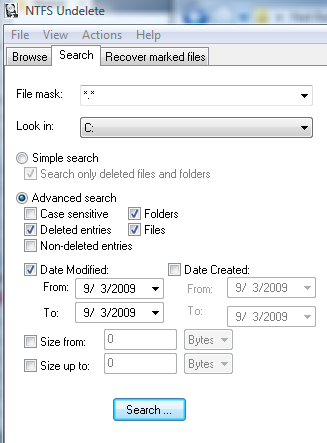NTFS Undelete is a free software utility that recovers deleted files that are no longer in the recycle bin. Of course, you're hoping something hasn't overwritten any of the deleted file. An ISO image is also provided if you want to run NTFSUndelete from a CD rather than installing the program after deleting a file. (The ISO image is not bootable, just used to run NTFSUndelete from the CD.) [more]
The user interface is easy to understand and there are some helpful advanced search options (date, size filters as well as file names, etc.)

